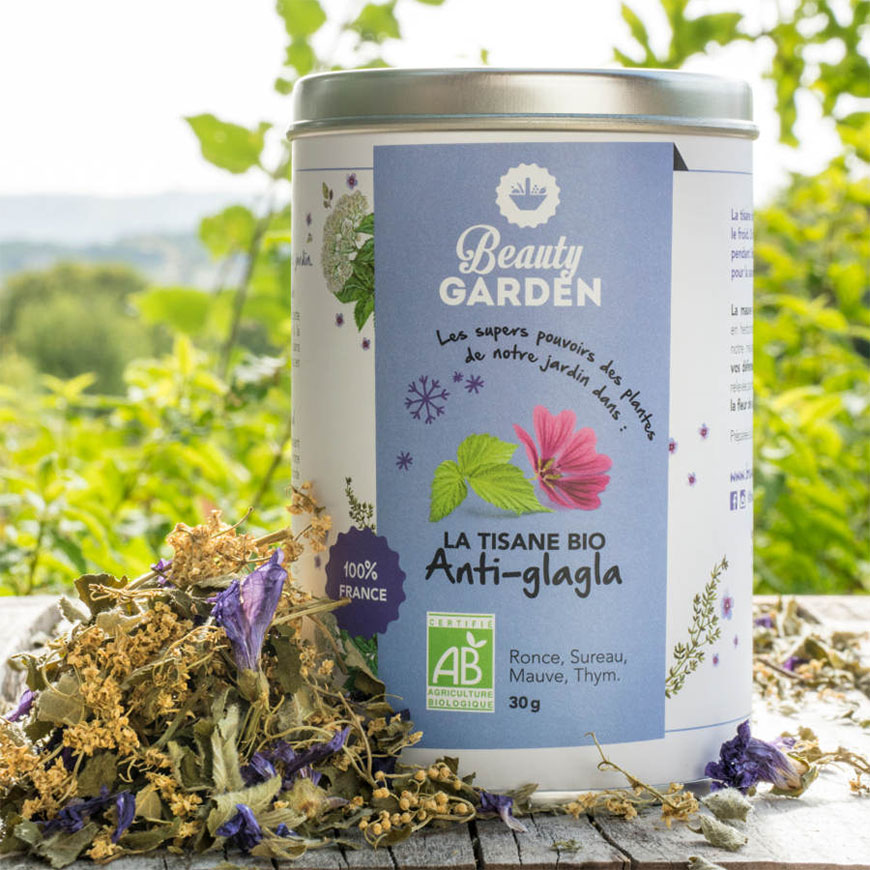
Sylvester Mallow - Etymology :
Common name = Sylvester Mallow (large mallow, cheese grass).It is present in dry soil environments. It typically lives on mountain slopes, in dry grasslands, slopes, edges of crops and fallow lands. It is considered a weed in many countries.
Botanical name = Malva sylvestris var mauritanica:
Malva comes from the Greek malacos, soft, in relation to its emollient properties, i.e., it softens and relaxes inflamed tissues. Sylvestris comes from Latin and means "that lives in forests".
Mythology and history :
Mallow was already well known in Greek and Roman times. It was considered a sacred plant that freed the spirit.
The Romans called it "Omnimorbia" which means "all diseases", because of its reputation to treat many symptoms.
In the Middle Ages, Charlemagne included it in the "capitulary of Villis" treaty imposing the cultivation of a list of plants in the gardens of the royal domain for their medicinal virtues.
Botanical description :
The mallow is a plant of the Malvaceae family. It grows in full sun in a rich, fresh and well drained soil. It has an upright and hairy stem, measuring between 30 and 150 cm. Its leaves, dark green, are rounded and cut in 5 lobes, reminding the fingers of the hand. The flower, in flared funnel, has 5 petals in the shape of heart of a bright pink, decorated with purple stripes. When they fade, the flowers turn blue. The small circular fruits are called cheeses, hence the name cheese grass. It is an herbaceous perennial plant which blooms between June and September.
Properties & Virtues :
Mallow calms internal irritations and inflammations, such as digestive disorders, and external ones, such as skin problems. Its emollient and softening properties soothe and hydrate the skin.
It is also known for its bechic and expectorant properties. It is used against cough, sore throat and bronchitis. Mallow can relieve the intestines and have a slight laxative effect.
Composition :
Mallow contains mucilage. These are polysaccharides that create a protective film to calm external and internal inflammation. It also contains flavonoids and tannins which give it antioxidant, antibacterial and anti-inflammatory properties.
The Mallow and Beauty Garden :
Cultivated in the middle of our farm, it can be seen from afar with its vivid purple color. From mid-June until the end of September, they are harvested every day, flower by flower, as they bloom. Once dried, the mallow is integrated into the Anti-glagla organic tea, for its emollient properties protecting the throat from winter ailments.
And did you know that bees love its pollen ? During our harvest, bees offer us a real apitherapy session with the sound of their constant buzzing around the mallow. In addition to its medicinal properties, the mallow also brings an emotional appeasement, serenity, by its bluish color when infused in hot water...
Bibliographie :
Les Remèdes De Santé D’hildegarde De Bingen. (2013). Marabout.
C., D. M. (2022). Histoire universelle du regne végétal, ou, Nouveau dictionnaire physique & œconomique de toutes les plantes qui
croissent sur la surface du globe 1773 [Leather Bound]. Generic.
Mulot, M. (2015). Secrets d’une herboriste : La bible des plantes. DAUPHIN.
Thévenin, T. (2012). Les plantes sauvages : Connaitre, cueillir et utiliser. Lucien Souny.
Chevallier, A. (2017). Larousse des plantes médicinales : Identification, préparation, soins - 500 plantes décrites - 1000
photographies. LAROUSSE.
Barrau, V. & Fourié, Y. (s. d.). l’herbier d’une vie. Plume de carotte.
Lieutaghi, P. (2005). Le Livre des bonnes herbes ; Le Livre des Arbres, Arbustes et Arbrisseaux : Coffret en 2 volumes. Actes Sud.

